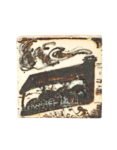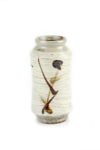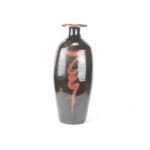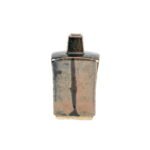Featuring the work of Bernard Leach: 1920-1979, Shoji Hamada: 1920-1923, David Leach: 1930-1955, Michael Cardew: 1923-1926, William Marshall: 1938-1977, Warren Mackenzie 1949-1952 and Derek Emms 1954-1955
Click on the images below for their exhibition shop page
- Bernard Leach
- Shoji Hamada
- David Leach
- Michael Cardew
- William Marshall
1920-1955
In 1920 Bernard Leach arrived in St Ives after spending 11 years in Japan and China, perfecting his craft as a Potter. He came with his friend Shoji Hamada at the invitation of Francis Horne; founder of St Ives Handcraft Guild. She helped to finance the building of a pottery on the outskirts of St Ives. Bernard’s ambition was to introduce the aesthetics of handmade pottery, which he had learnt in the East, and to bridge the gap between Eastern and Western cultures.
Breaking this new ground proved an uphill struggle from the start. Materials were not readily available – wood for the kiln firings were scarce, and they had to dig and refine their clay and glaze materials from the local geology. As these were unrefined and untested they produced erratic and inconsistent results in the kiln. In consequence there were significant and costly kiln losses. Also, educating a public used to refined industrial ware was proving difficult. Bernard’s pots had their own individuality, and the public used to the tight lines, and regular shapes of industrial pottery, found it difficult to accept the irregular dark glazes, and raw earthiness of the Leach style. The result was a succession of financial crises that put the pottery on the brink of failure.
The training of Potters into the new ideas and aesthetics of studio pottery was seen as vital to the success of the movement. It started early with a young academic; Michael Cardew. He was followed by a succession of eager candidates, who saw this is a new way of life, and the making of pots as a form of expression. However the constant turnover of new students flowing through the pottery had its drawbacks. They lacked continuity in the workshop, and the output was haphazard and the quality varied.
Bernard’s son David joined the pottery just after the war and formed a partnership with his father in 1946. He, together with his father, standardised the shapes of the domestic ware, and produced a catalogue for wholesale sales. He also introduced a few paid members of staff, to give a greater continuity into the quality of the wares. This gave the pottery stability and a broader outreach to the general public. Now with a popular domestic product, and Bernard’s growing reputation in galleries worldwide; as an artist and potter, the pottery began making a greater impact. Over the following years its reputation grew globally, and the Pottery’s standing and influence in the arts and crafts, began to secure its position, as the birthplace of the “Studio Pottery” movement.




